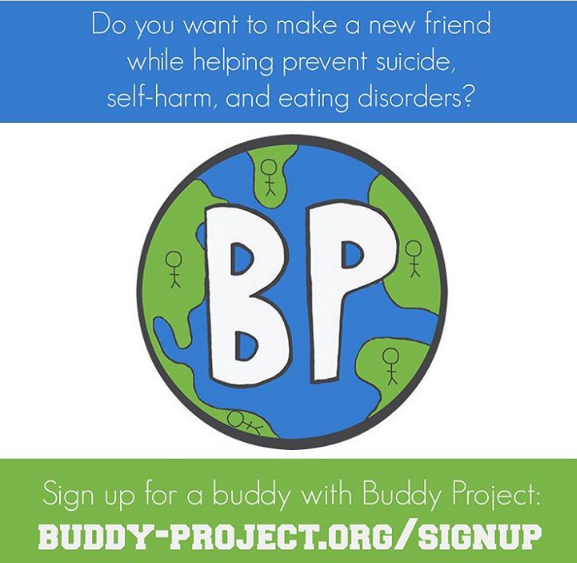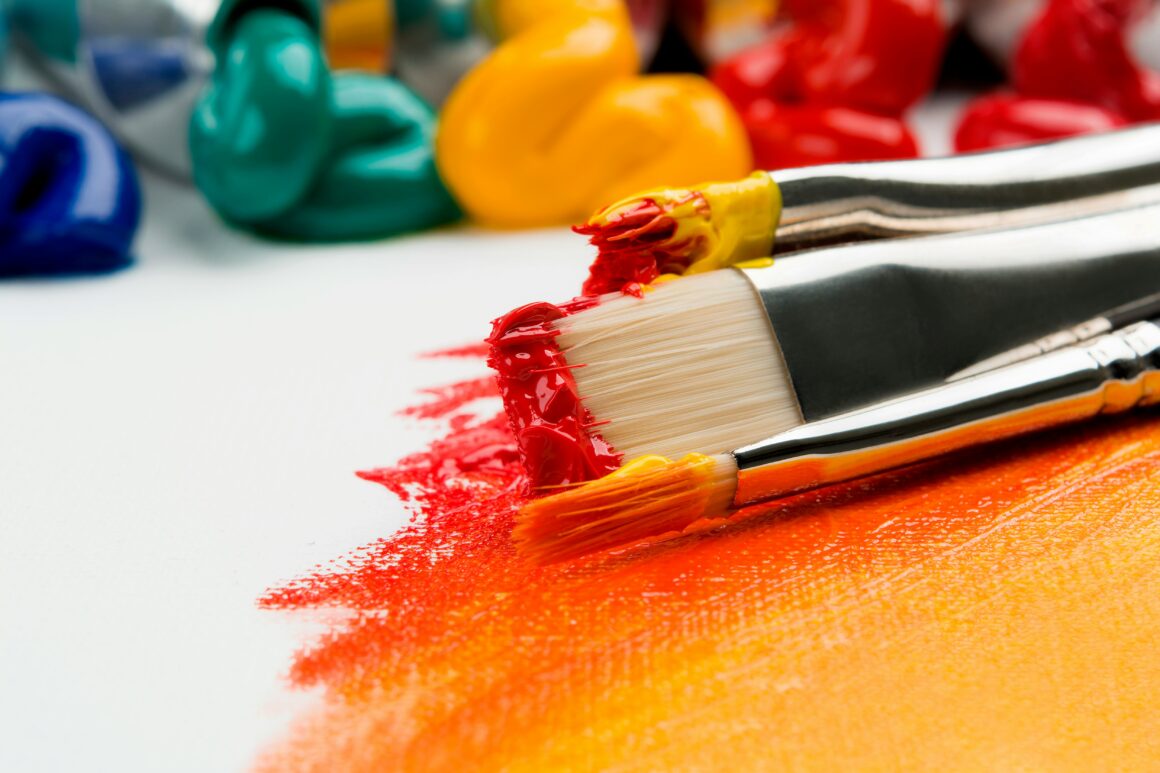
Mental health is becoming a serious problem among children and adolescents. According to the Mental Health foundation, 10% of young people (aged 5-16 years old) have a diagnosable mental health problem yet 70% of them have not had any professional or sufficient help. That is why Gabby Frost, started a initiative called Buddy Project when she was just 15 in order to raise awareness and allow those who have mental illness to reach out to someone. And in just 3 years, she has transformed this project into a non-profit movement that keeps growing every day. As May is Mental Health Awareness Month, let’s look at how Gabby’s story and how she hopes to inspire other young people not only create their own initiatives but also to end the stigma surrounding mental illness.
Q: Could you tell us a little about yourself?
I’m an 18-year-old who is passionate about raising mental health awareness, music, and BB-8. In about one month from now, I’ll be graduating high school and continuing my education at Drexel University for Music Industry. My love for music led me to this career path and I’m hoping that I can work in the business side of the industry. I’ve been to 26 concerts in my life and have 4 more to go to this summer! My favorite singers and bands include twenty one pilots, Panic! at the Disco, Zayn, The 1975, Hunny, The Weeknd, and Halsey.
Q: Could you tell me about the Buddy Project? What inspired you to start it, why and how? And what were you hoping to achieve?
Buddy Project started off as an initiative made to prevent suicide and self-harm, but has grown into a non-profit movement that pairs buddies and raises awareness for mental health. I started Buddy Project when I was just 15.
I was inspired to create it due to having a few friends (both from school and online) that were going through mental illness, self-harm addiction, and suicidal thoughts. I was always supportive of these friends and they often told me how much the support meant to them.
During that same year, I came across multiple people on Twitter who were contemplating suicide, and wondered if I could think of a solution to the problem. When brainstorming, I remembered how valuable my support was to my friends, and thought it would be a good idea to create a way for people to be paired with a friend.
At first, I just wanted to keep Buddy Project as a small activity I did on the side, but within the first 12 hours the initiative proved itself to be more than just a “small side activity.” I got over 2,900 sign ups and 2,700 followers on Twitter, and within the next month it grew to over 10,000 sign ups. At these beginning stages, I decided I would solely pair buddies and post tweets about mental health.
Q: What primary message did you want to get across?
Ever since day one, I’ve wanted to get across to everyone that is it valid to have a mental illness. It pains me to see people shamed or invalidated for their mental health problems, and I want everyone out there to know there are people who understand and are willing to listen.
Over the past 3 years, my message has changed due to adding more to i. Buddy Project is now a safe place for people and I believe in being LGBTQ+ inclusive; no one deserves to be discriminated against regardless of their age, gender identity, sexuality, religion, race, or socioeconomic status.
Anyone between the ages of 13 and 25 can sign up to receive a buddy around the same age as them and has a mutual interest. Having a buddy is beneficial because you know that you have at least one thing in common, so the awkward phase of finding a shared interest is skipped. Once you introduce yourself to your buddy, it’s really up to the both of you how you’d like to continue. A lot of people end up DMing/texting or video chatting, and in the best cases, they meet in person.Anyone between the ages of 13 and 25 can sign up to receive a buddy around the same age as them and has a mutual interest. Having a buddy is beneficial because you know that you have at least one thing in common, so the awkward phase of finding a shared interest is skipped. Once you introduce yourself to your buddy, it’s really up to the both of you how you’d like to continue. A lot of people end up DMing/texting or video chatting, and in the best cases, they meet in person.
The benefits of Buddy Project really depend on how you want to use the program, but for the most part, people gain a supportive friend who they can talk to about anything with. A lot of Buddy Project participants end up seeking help for their mental illness, addiction, or suicidal thoughts, or no longer want to self-harm or kill themselves.
Q: How has the project changed from when you started it to now? Did it go as you wanted? What changes surprised you?
When I first started Buddy Project, I had no plans to turn it into a 501(c)(3) non-profit organization. I actually had no idea what a 501(c)(3) was when I started it; I discovered what non-profits really were a little over a year ago in April 2015. The change from just a Twitter initiative to non-profit went very smoothly and nothing major changed about how I run the program itself.
The changes that surprised me the most were the different advantages about being the CEO of a non-profit. I’m eligible to apply for a countless amount of grants (for Buddy Project), workshops, and other initiatives that aid teenage changemakers.
Q: Interesting stories you could share with us about it?
Continuing from my last answer, back in March, I attended Three Dot Dash Just Peace Summit, which is an initiative started by the We Are Family Foundation. During the week long summit, I met 29 other teens who started projects either in their community or worldwide. All of us learned valuable advice regarding moving forward and even got paired with a mentor. My mentor is Liz Eddy, and she started a social venture when she was 15 just like me. Now she’s a director for Crisis Text Line, a 24/7 solution for teens in crisis, and was a founding member of the program.Continuing from my last answer, back in March, I attended Three Dot Dash Just Peace Summit, which is an initiative started by the We Are Family Foundation. During the week long summit, I met 29 other teens who started projects either in their community or worldwide. All of us learned valuable advice regarding moving forward and even got paired with a mentor. My mentor is Liz Eddy, and she started a social venture when she was 15 just like me. Now she’s a director for Crisis Text Line, a 24/7 solution for teens in crisis, and was a founding member of the program.
Thanks to Three Dot Dash, I feel more empowered than before about being a teen social entrepreneur. I also have to thank other experiences I’ve been a part of, like winning the PB Teen Extraordinary Teens contest and John Fitzgerald Kennedy Memorial Award.
Last April, I flew to San Francisco, CA, for a few days and met 5 other teens who created projects of their own. While I was there I met Lulu Cerone, who runs the charity Lemonaid Warriors. She attended Three Dot Dash in 2012 and was able to nominate me to attend this year. Without having the first experience, it never would have led me to the second one, and I’m more than grateful for that.
Another experience that impacted me immensely was winning the JFK Memorial Award, an award for making a difference in the community. In December 2015, I became the youngest recipient of the award presented by the Northeast Community Center for Behavioral Health. Employees of Northeast told me that Buddy Project is like diversion therapy* since the buddies distract someone from their toxic thoughts. I’ve never thought about it that way and I’m glad I’m able to help out with the buddies.
*Note: Buddy Project is not equivalent to getting professional help!
Q: What are your future hopes for both Buddy Project and the community? Do you have any other future plans?
I definitely plan on launching a secure website with login (username and password) capabilities, as well as an app that mirrors the website. Right now I don’t have the funding to do so, but I’m hoping to find grants to apply for so that I can cover the costs.
I definitely plan on launching a secure website with login (username and password) capabilities, as well as an app that mirrors the website. Right now I don’t have the funding to do so, but I’m hoping to find grants to apply for so that I can cover the costs.
Other than enhancing the buddy pairing aspect, I want to start doing local fundraising events and hopefully expand them to be national and international. I’d love to raise money for behavioral health centers and mental health research organizations so that more people receive proper treatment.
Another big dream of mine is working directly with singers, bands, actors, youtubers, and other public figures who are just as passionate about mental health awareness as Buddy Project. It would be amazing to be able to spread my message across in different ways through other people. By doing this, we could hopefully educate millions of people on the basics of mental health.
To sign up for Buddy Project, please visit: http://www.buddy-project.org/
You can also read articles on mental health written by fellow teens on their website!





Comments are closed.